CMSC Reviews Six Top Enterprise eCommerce Platforms - Part II
In our first article of this series, we examined the key features, pros and cons, and pricing of Demandware, BigCommerce, and Shopify. This article will shed light on commercetools, SAP Hybris, and Magento.
commercetools
SPHERE.IO is an e-commerce Platform-as-a-Service (PaaS) from commercetools, a technology provider 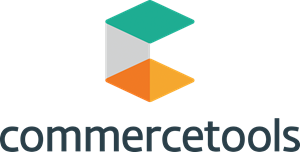 founded by Dennis Werner and Dirk Hörig in 2006 and based in Berlin and Munich, Germany with 80 employees. The platform is designed to provide all commerce functionalities like product information management, customer management, order management, cart management, and marketing toolsets via open API targeting omnichannel strategies. Customers of commercetools include BRITA, Red Bull, REWE, DeinDeal, and Koffer24. Since 2014, commercetools has been a wholly owned subsidiary of REWE Group. The e-commerce solutions built on SPHERE.IO is currently used by 300 merchants. The typical SPHERE.IO merchant offers between 3,000-5,000 products, each with about 30 different attributes, but some companies offer as many as 100,000 products via SPHERE.IO.
founded by Dennis Werner and Dirk Hörig in 2006 and based in Berlin and Munich, Germany with 80 employees. The platform is designed to provide all commerce functionalities like product information management, customer management, order management, cart management, and marketing toolsets via open API targeting omnichannel strategies. Customers of commercetools include BRITA, Red Bull, REWE, DeinDeal, and Koffer24. Since 2014, commercetools has been a wholly owned subsidiary of REWE Group. The e-commerce solutions built on SPHERE.IO is currently used by 300 merchants. The typical SPHERE.IO merchant offers between 3,000-5,000 products, each with about 30 different attributes, but some companies offer as many as 100,000 products via SPHERE.IO.
Key Features and Benefits
API-First: A key differentiator between commercetools and other commerce platforms is that through its API-first principle, it’s highly flexible and a great fit for new e-commerce approaches like microservices for example. Being an API platform, SPHERE.IO supports anything from Java, PHP, native apps like iOS and Android, Ruby, and deep integrations within your environment.
The platform is not API only, though. It’s a full stack enterprise commerce platform that has SDKs, front-end tooling, integrations to various ERP systems, back-end tooling, category managers, e-commerce managers and so on. On a side note, The SDK contains more features that are not covered in the API to help you jumpstart even faster.
Deployment: Every developer in the market, regardless of their background, can work on the platform through 8th-grade user experiences with a week of onboarding maximum.
Integration: commercetools comes with a range of standard connectors, making it easy to connect your CRM, ERP or CMS solution to the platform. On top of that, their API allows for unlimited connectivity and lets you integrate all of their business-relevant applications.
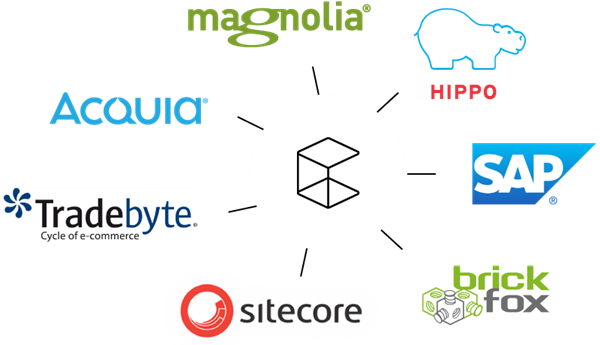
Search: The platform provides fast search and filtering capabilities through NoSQL and ElasticSearch. Using NoSQL technology, the API allows you to create comprehensive product searches, after-search navigation and configuration. In addition, every change made to the product catalog is automatically indexed. With the built-in facet technology, you can enhance customer experience and usability with extended search and navigation capabilities. Therefore customers can find products faster – especially if you have a comprehensive and complex catalog.
Scalability: Even at high traffic levels, the platform delivers fast performance and scales automatically, matching increasing customer requests. The platform is monitored 24/7, and guarantee a 99.99% uptime. Average response times <100ms per GET request. SPHERE.IO is operated in data centers of Rackspace. All data is stored on backed-up servers with several layers of protection against third-party access. Server capacity can be expanded many times over in real time to ensure that you always have sufficient available output.
Security: All communication is strictly encrypted using SSL and additionally comes with a multistage OAuth 2.0 implementation for authentication. Security updates are loaded within hours. Apart from an on-site security team, the system is protected using biometric devices as well as a variety of access layers.
OAuth is an open standard for authorization and provides a method for clients to access server resources on behalf of a resource owner like a different client or an end-user. It also provides a process for end-users to authorize third-party access to their server resources without sharing their credentials, such as a username and password pair, using user-agent redirections.
Payment: commercetools supports various international payment methods and also offers custom integrations as the data model can be extended to cover any payment method in the world. Products can have multiple prices depending on currencies, countries, and customer groups. Also, prices can be set for marketing purposes such as time-based promotions.
Cart & Order Management: Cart calculation, shipping, customer pricing, state- and country-based taxes can be ruled and managed. Its omnichannel order management is synchronized with backend systems like SAP or Microsoft. With all of your order, product and customer information in one location, you can add, edit and track all order and payment statuses.
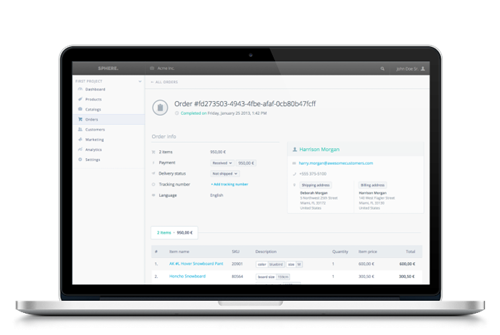
Design: The platform provides Merchant Center backend which is built to make commerce management as easy and self-explanatory as possible. It has enterprise class features such as multi-project and catalog management, product information management, and a full-blown set of features for internationalization. It supports different screen resolutions for normal desktops as well as smaller screens and tablets. Designers, developers, commerce managers, customer support and others can work with the same backend.
Drawbacks
The only real limitation is that you need to have a CMS framework in place, to use the platform and build your content channels around.
SAP Hybris
Founded in 1997 and acquired by SAP in 2013. Many internationally recognized businesses use the platform, including Samsung, O2, Vodafone, Procter and Gamble, GE, Toys “R” Us, and Audi. SAP Hybris has been ranked as a vendor in the ‘Leader’ Quadrant for the 2016 Gartner Magic Quadrant report for Digital Commerce. Additionally, in a survey conducted by Gartner and titled "Critical capabilities for Digital Commerce", on the comparison of three e-commerce platforms, SAP Hybris, Magento, and Demandware, in terms of their strategic fit in both large and small organizations, SAP Hybris was ranked first in all 3 categories: multichannel B2C, Global B2C, and B2B platform. In fact, between 2012 and 2015, 58% percent of organizations that phased out their Demandware platform migrated to SAP hybrid whereas 34% of organizations that phased out their Magento adopted SAP Hybris.
including Samsung, O2, Vodafone, Procter and Gamble, GE, Toys “R” Us, and Audi. SAP Hybris has been ranked as a vendor in the ‘Leader’ Quadrant for the 2016 Gartner Magic Quadrant report for Digital Commerce. Additionally, in a survey conducted by Gartner and titled "Critical capabilities for Digital Commerce", on the comparison of three e-commerce platforms, SAP Hybris, Magento, and Demandware, in terms of their strategic fit in both large and small organizations, SAP Hybris was ranked first in all 3 categories: multichannel B2C, Global B2C, and B2B platform. In fact, between 2012 and 2015, 58% percent of organizations that phased out their Demandware platform migrated to SAP hybrid whereas 34% of organizations that phased out their Magento adopted SAP Hybris.
Key Features and Benefits
Commerce Accelerator: It is one of the “out-of-the-box” solutions Hybris provides and comes with responsive themes, order and inventory management tools, and payment methods. It is downloadable and the average launch time is anywhere between 3 and 4 months.
Mobile commerce: With Hybris, the mobile optimization features are unlimited. You can optimize your online store to pick the best theme that will load on your customers’ mobile device. Also, designing a native app for your online store is easy as Hybris takes advantage of an SDK for both Apple and Android.
Scalability: You can wire and configure both new and existing components with the Java Spring Framework, from there add your own business objects and processes. Implementations in production support more than 20 million SKUs and 6,000 transactions per second. The platform is one of the best suited for on-premise large-scale highly customized multi-channel operations as it is capable of tackling the majority large scale enterprise e-commerce use-cases. That’s why for big-budget large-scale eCommerce implementations Hybris is on nearly every short-list.

Multichannel Accelerator: It is a tool that enables users to deploy storefronts and themes. With the accelerator, retailers can offer user-friendly, one-page checkouts, multiple payment gateways, and integration into major social media channels.
Order Management: With hybris Order Management, merchandisers can enable their online customers to monitor and manage all the touch points all the way down the order line as the feature gives a centralized view of all order information. As a result, consumers can make, receive and return orders through any channel they choose.
Integration: The ERP-agnostic platform and service-oriented architecture enable developers to integrate with SAP as well as other internal systems in a fairly straight-forward manner. Because of the fact that the technology stack is comprised of recognizable open-source components, the developers and operations teams experience a fairly smooth transition.
Content Management: The platform enables retailers to provide contextual experiences to their customers with its integrated, intelligent and automated content management solution, SAP Hybris Customer Experience. It offers a 360 degree perspective of the customer to present relevant content dynamically based on customer context. It also enables marketers to create personalized sites, easily manage content through all channels, and deliver more intuitive customer experiences.
User Experience: Through the HMC, bulk modifications to templates, modules, products, etc, are very easy to make.
Service oriented: The hybris Omni Commerce Connect (OCC) web services offer a RESTful web services API to make the platform service-oriented. Hybris is also very flexible in terms of front-end technology. If you prefer any Java-based web application framework, for example, you can interface with the business logic APIs, called hybris ServiceLayer API, or if you prefer a non-Java web technology, then you can run your web application on remote systems and integrate these web applications using web services. The bottom line is that web applications can either be developed using Java (Spring MVC, JSF, others) or any other non-Java technology like a Rails-based front end that communicates with hybris via web services can be used.
Drawbacks
-
Hybris implementations are neither fast nor inexpensive. The projects are completed anywhere from 12-24 months. For a standard large-size business implementation, SAP Hybris merchants spend around $50,000 per year. There are different options, such as pay-per-use and more.
-
Some have found that accelerators are not fully baked and ready to use with UI-driven configuration.
-
Hybris has received lower reviews regarding their analytics, reporting, and order management capabilities, which have to be spot on when managing an e-commerce business.
-
Hybris charges a premium for support.
-
Steep learning curve for front end developers who are not already well experienced with the Java stack.
Magento
In November 2015, the company announced that it had launched as an independent company, backed by the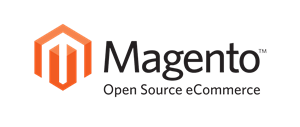 Permira funds, four years after its acquisition by eBay, Inc. Mark Lavelle, formerly senior vice president at eBay Enterprise, was appointed to lead the company as its new CEO. In April 2016, the open source e-commerce platform provider rolled out its first cloud-based service, Magento Enterprise Cloud Edition, and announced the launch of its next-generation commerce applications marketplace, Magento Marketplace. With over 250,000 merchants on board, Magento is one of the eCommerce industry’s most popular self-hosted platforms and facilitates over $50 billion in transactions annually.
Permira funds, four years after its acquisition by eBay, Inc. Mark Lavelle, formerly senior vice president at eBay Enterprise, was appointed to lead the company as its new CEO. In April 2016, the open source e-commerce platform provider rolled out its first cloud-based service, Magento Enterprise Cloud Edition, and announced the launch of its next-generation commerce applications marketplace, Magento Marketplace. With over 250,000 merchants on board, Magento is one of the eCommerce industry’s most popular self-hosted platforms and facilitates over $50 billion in transactions annually.
Key Features and Benefits
Shopping cart: As a full-featured e-commerce software, Magento takes care of everything from checkout to secure payment processing. Customers can easily check out by signing up for an account or by using the service as a guest. You can choose from multiple payment-processing options offered by Magento or use your preferred payment gateways such as Simple Pay, PayPal, Amazon Payments, Google Checkout, Authorize.net and so on.
SEO: Use Magento's SEO tools and configurations to boost traffic to your store and individual product pages from search results. Offerings include metadata for products and categories, sitemaps for Google and other search engines, and full control over URLs.
Analytics and reporting: Magento provides full analytics and reporting to enable retailers to monitor their online stores’ performance. Users can either take advantage of Google Analytics integration or utilize the detailed sales reports, shopping cart reports, most-viewed and best-purchased product reports, stock and inventory reports, search term reports, coupon usage, and best customers generated by Magento.
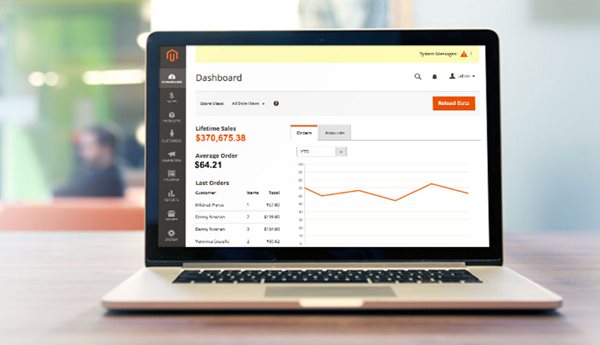
Ease of use: The platform is not a plug-and-play solution. Although Magento provides a wide range of resources to help not tech-savvy merchants get up to speed, there is a learning curve. Finding a developer is not a hard task as the software is quite popular but it may be costly - at around $150 to $250 per hour. On the other hand, Magento interface is well received by developers due to its quick and easy self-hosting setup. Additionally, the navigational menu makes it easier to find customers, products, promotions, sales, and reports. Here’s the Magento’s installation guide.
Integration: Since the platform is open source, there are hundreds of integrations (both free and paid) available in the Magento Marketplace. Say, you’d like to increase conversions on your site, you can add Nosto, a free extension that tracks unique visitor behavior and offers them suggested items based on their online actions.
Payments: Magento provides one-click payments, guest checkouts, and shipping to other addresses if needed. There is also a “bill me later” program available for those who want to help out their customers. Integration with PayPal and Authorize.net is another well –received option. Finally, the entire shopping cart is built to work with and display tax and shipping calculations.
Hosting: Unlike many e-commerce software which requires you to host your online store on their servers, Magento can be installed on your preferred Web-hosting provider which gives you more control over your website and the entire platform.
Customer Service: For those who use Magento Enterprise, the customer portal can be reached via phone or online. They are working with a ticketing system and their turnaround time is anywhere between one and four hours, depending on the type of your package. However, Magento Community users can’t get a phone support. Additionally, Magento provides various resources for both business and technical questions, including articles, tutorials, webinars and screencasts, white papers, and an e-commerce library as well as Magento development classes, customization classes, and on-demand video training. Training courses cost anywhere between $0 and $4000.
Security: Customer information is not stored or passed around without their knowledge as all Magento sites are expected to be PCI compliant. You can add an SSL certificate, and execute a two-step authentication process for keeping people out of the backend of your site. Because Magento is a self-hosted option, users are responsible for establishing your site’s security.
Themes: You can find both free and paid themes from Magento Connect. Prices start around $60 and go up to $100.
Drawbacks
-
No abandoned cart feature built-in but there are some integrations for that.
-
There’s a high ROI once you get over the learning curve but you have to invest time. Building an e-commerce website using Magento requires high-level programming skills.
-
Since you run Magento on your own server, the company isn't responsible for upgrades, maintaining your back-end architecture, or fixing any bugs or glitches.
Pricing
Its Community plan is available for free, while its Enterprise plan is tier-based. For small businesses, Community could be a great choice. This plan is supported by a community of Magento users who can help you modify the software for your business. You can also host the platform on your own server, meaning that you have more control over your web hosting budget. However, you can’t cheap hosting as the platform requires a powerful web host.
Magento Enterprise Edition begins at $22,000 to $32,000 per year. It’s important to remember that some internal or external staffing cost will sit alongside this, which will push up considerably the overall costs of your e-commerce operation as this option comes with enterprise-level functionality and support to configure your website and back-end workflows. Plus, Magento's enterprise software offers more payment gateway options than any other e-commerce platform.
Conclusion
In the age of technology, the right e-commerce platform can help your business flourish. However, there is no one-size-fits-all approach to this issue. Therefore, outlining your business goals and needs alongside expectations from a platform would make a great starting point. Once you have a crystal clear vision, then you should do your market research to understand what your options are within the market where everything is moving at a very fast pace. During your due-diligence, there is also one paramount consideration factor that you should always keep in mind: what can change in the next couple of years as your business ramps up. That mindset will lead you to pick a future-proof platform in the end.

Venus Tamturk
Venus is the Media Reporter for CMS-Connected, with one of her tasks to write thorough articles by creating the most up-to-date and engaging content using B2B digital marketing. She enjoys increasing brand equity and conversion through the strategic use of social media channels and integrated media marketing plans.